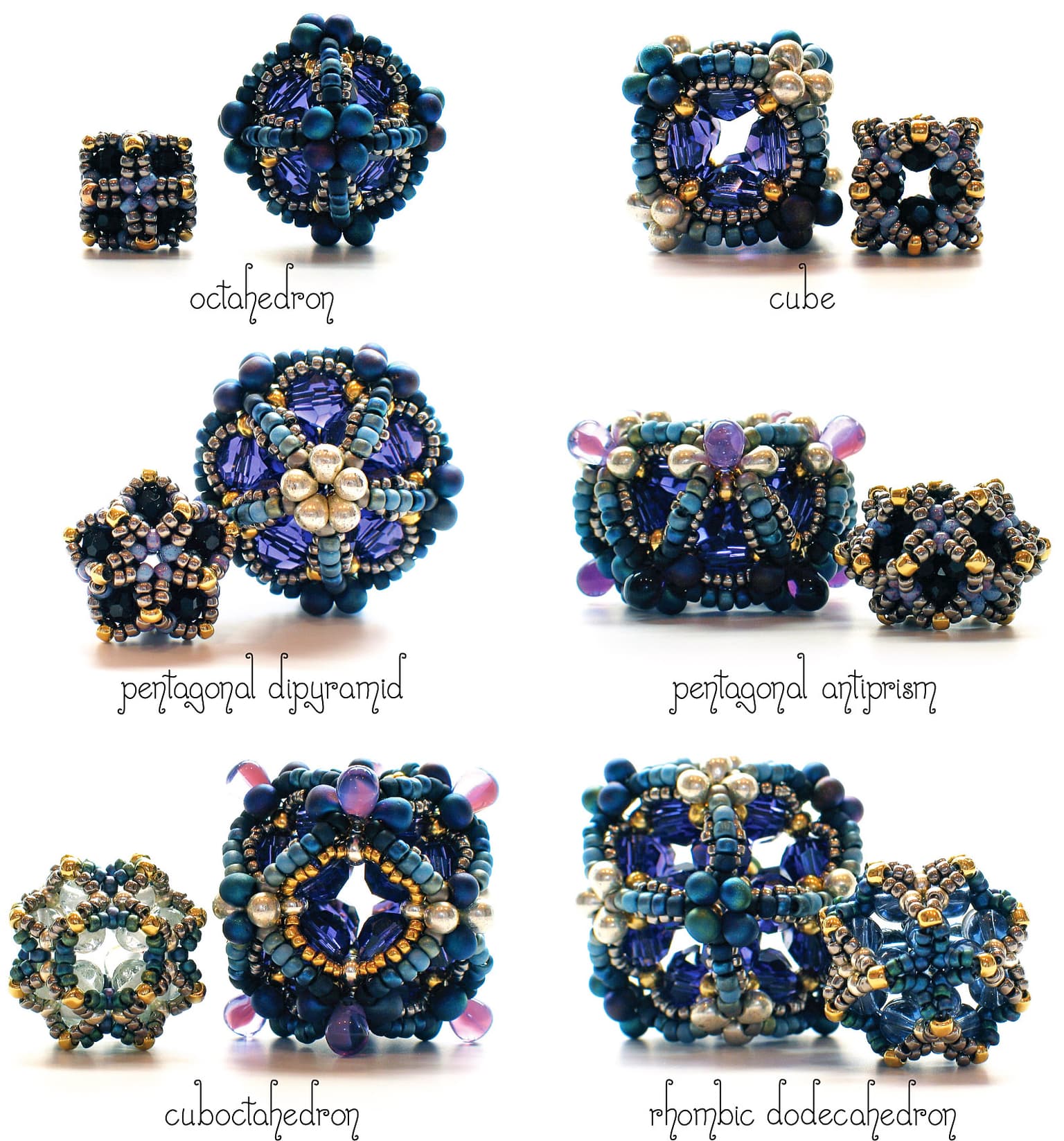2011 Joint Mathematics Meetings
Gwen Fisher
Artists
Gwen Fisher
Artist
Bead Infinitum
Sunnyvale, California, USA
Statement
I weave beads to appeal to people's affinity for organization in design. I use geometry, symmetry, and topology as inspiration for the structure of my creations. Across cultures and continents, humans show a natural affinity towards the aesthetic of pattern and order, and my art appeals to this aesthetic in a tactile, tangible form. I have found that people often recognize the repetition and order in my art. So my art appeals to their sense of discovery of the familiar in the unfamiliar. A remarkable feature of bead weaving is its scalability, and most of my pieces are at the small end of the scale. I use beads as little as 1.5 mm by 1 mm to build clusters of beads, tiny enough to be worn as jewelry, or just to be carried in a pocket, like a good luck charm. While most of my beaded beads can be held in one hand, their designs have the potentiality to be scaled up to be large sculptures, so within their miniature frameworks is the potentiality of skyscrapers, or so I like to imagine.
Artworks

Blue Ionic Polyhedra: 12 Beaded Beads in Two Sizes
12 beads, longest diameter ranges from 11 mm to 33 mm
Bead weaving with crystal, glass and metal beads, and thread
2010